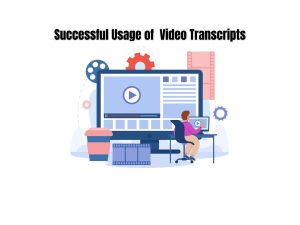
Case Studies: Successful Usage of Video Scripts
In the digital age, video content has become an integral part of online communication strategies for businesses and organizations across various industries. While videos are
In business interactions, following up with clients, potential customers, or partners is critical to nurturing relationships, closing deals, and achieving business goals. However, it can be challenging to strike a balance between persistence and intrusion. In this article, we examine how to excel in the art of the persistent follow-up without crossing the line into becoming burdensome or annoying.
A persistent follow-up is a series of purposeful, consistent communication efforts aimed at eliciting a response or action. It’s an essential sales, marketing, negotiation, and networking strategy that demonstrates your commitment and builds trust. However, too much persistence can be construed as annoyance or intrusion, negatively affecting the relationship you’re trying to build.
Maintaining a harmony between persistence and intrusion requires understanding three things:
1. The context of the communication: Is it a sales pitch, a job application, or a networking effort?
2. The other party’s responsiveness: Are they acknowledging receipt of your messages, or being “often unavailable”?
3. Your communication frequency: Are you allowing sufficient time between follow-ups, or bombarding them with messages?
With this understanding, let’s dive into how you can master the art of the non-intrusive, persistent follow-up.
Clear communication reduces the need for multiple follow-ups. Highlight the purpose of your message, pitch your proposition succinctly, and make your call to action unambiguous. This minimizes potential misunderstandings and makes it easier for the recipient to respond.
Having a defined schedule can help maintain a balance, ensuring you stay on the recipient’s radar without being intrusive. For instance, if you’re not getting a response, you might follow-up after a week, then perhaps two weeks after that. Remember, each situation is different and the appropriateness of your schedule can depend on the urgency of the matter, the relationship with the recipient, and their typical response habits.
Keep your tone polite, respectful, and patient throughout all follow-up communications. Refrain from using aggressive or manipulative phrases. Instead, remind the recipient of your previous conversations or emails, convey the importance of their response, and suggest a time frame that works for them.
An excellent strategy for non-intrusive following up is to provide new, valuable information in each communication. This approach ensures the recipient gains something with every interaction, making them more responsive.
Alternating between different communication channels — email, phone calls, texts, or social media — can prevent your follow-ups from becoming redundant and annoying. Each channel also offers its own level of formality and response time, which allows you to tailor your approach to the situation.
If the recipient explicitly asks you to stop following up or indicates that they’re not interested, respect their wishes. Being intrusive after such a request will only burn bridges, which could affect your reputation and future opportunities.
Mastering the art of the persistent follow-up meets somewhere at the intersection of determination, patience, and empathy. Being persistent means you’re focused and committed to achieving your goal. On the other hand, avoiding intrusion portrays your empathy for others, respect for their needs, and understanding of boundaries. By keeping this balance, your follow-up attempts can breed successful business relationships, sales, and negotiations.

In the digital age, video content has become an integral part of online communication strategies for businesses and organizations across various industries. While videos are

Duplicate content refers to identical or similar content that appears on multiple URLs within a website or across different websites. While duplicate content is common





“LeadsView did an excellent job with my project and will definitely recommend. Easy to work with, flexible and good quality of work. I am more than happy to recommend them."




















Copyright 2023 © LeadsView. All Rights Reserved
